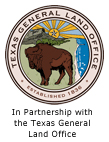Oil Spill Prevention & Response

Texas Water Development Board (TWDB), in partnership with the Texas General Land Office (TGLO) Oil Spill Prevention and Response Program (OSPR), maintains near real-time and forecast simulations of water circulation for use in the event that an oil spill occurs within Texas bays or coastal waters. For bays with heavy ship traffic, these simulations quickly provide information to TGLO responders on the potential path of an oil spill by predicting water current direction and speed throughout the bay. Oil-spill emergency response teams coordinated by the TGLO use information provided by these simulations to deploy clean-up teams and other resources to minimize a spill's impact.
The operational model maintained by the TWDB—the Texas BAYCAST—provides forecasts of hydrodynamic conditions for all bays and estuaries along the Texas coast up to five days into the future. The BAYCAST automatically runs every morning to ensure that forecasts are up-to-date and incorporate the most recent environmental information. Model outputs are automatically validated against observational data to ensure reliability and uploaded to the TWDB modeling server for rapid access by OSPR response teams.
While TWDB forecasts are only one of many sources of information used by OSPR during active spill events, these forecasts have been a valuable source of information that have aided the TGLO in their response efforts for years. TWDB and TGLO maintain an active partnership for maintenance of the operational model and to continue to improve these forecast products in the future.
General NOAA Operational Modeling Environment
In order to simulate the trajectory of oil spills when they occur, the location of which cannot be known or forecasted in advance, outputs from the Texas BAYCAST are designed to be compatible with the National Oceanic and Atmospheric Administration (NOAA) GNOME suite for ease of use during active spill events. In particular, the WebGNOME application provides an accessible online interface for simulating spill trajectories, and two of the standard BAYCAST output products—the hydrodynamic two-dimensional surface and depth-averaged products—are designed to match the expected format for currents in GNOME. Archived files for each individual date can be merged to construct one seamless simulation, or one can use the files with the “recent” label, which are updated daily to include the most up-to-date information (five days of forecast with five days of hindcast). Information on the spill location, type, and quantity can then be combined with other environmental information, such as winds or weathering data, to simulate the expected travel path of oil in the water. This information can then be communicated to response teams to inform their cleanup efforts.
Additional Information
TWDB simulated hydrodynamic data is freely available for research and educational use. More information on the Texas BAYCAST is available on our Estuary Circulation & Salinity Models page and on the TWDB modeling server. For the most up-to-date information on the model development, temporal coverage, or other inquiries, please contact Coastal Data.